I’m Salik Waquas, a filmmaker and full-time colorist passionate about the art of visual storytelling. I own a color grading suite, Color Culture, where I work with filmmakers to bring their visual visions to life. Writing about cinematography allows me to explore the intricate details behind the images we see on screen and share my perspective with others who love the craft as much as I do.
Cinematography Analysis Of Aquaman
As a professional film colorist and enthusiast of visual storytelling, I’ve always been captivated by how cinematography shapes a narrative, especially in larger-than-life films like Aquaman. Directed by James Wan and shot by the legendary Don Burgess, Aquaman is a masterclass in combining traditional filmmaking techniques with cutting-edge technology to create a vibrant underwater world that is visually stunning. In this analysis, I’ll delve into the film’s visual elements and share my insights into what makes Aquaman a unique cinematic experience.
About the Cinematographer
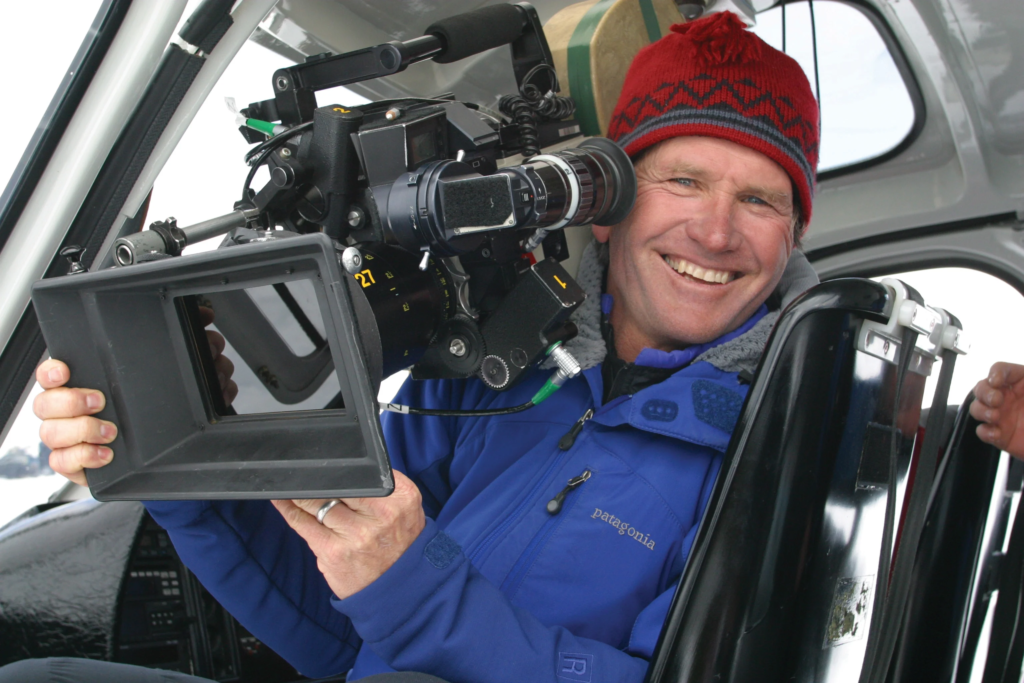
The visual brilliance of Aquaman owes much to Don Burgess, a seasoned cinematographer with an illustrious career that includes Forrest Gump, Cast Away, and The Polar Express. With Aquaman, Burgess embraced the challenge of bringing an entirely underwater world to life. His experience with VFX-heavy projects was instrumental in crafting the fantastical and immersive visuals that define the film. By blending his technical expertise with a keen eye for storytelling, Burgess elevated Aquaman into a visual spectacle.
Inspiration for the Cinematography of Aquaman
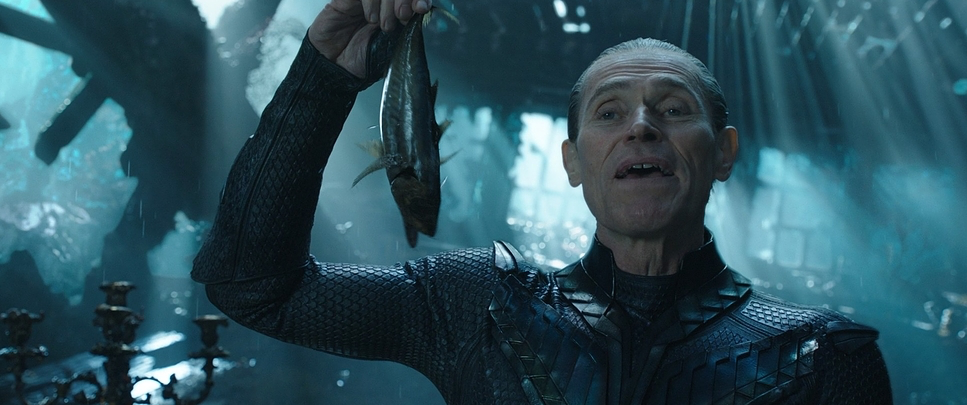
The visual style of Aquaman is inspired by a mix of influences, including James Wan’s dynamic filmmaking approach and the colorful, exaggerated aesthetics of comic books. Burgess and Wan cited films like Avatar and The Abyss as major inspirations, particularly in the way they depicted underwater worlds with both grandeur and intimacy.
Additionally, documentaries like Blue Planet influenced the lighting and movement of the underwater scenes. Burgess masterfully combined these inspirations, creating a world that feels alive, fantastical, and grounded. The playful tone of the film, akin to a “Saturday morning cartoon,” reflects a self-awareness that leans into the campy origins of the character while embracing modern cinematic storytelling.
Camera Movements in Aquaman
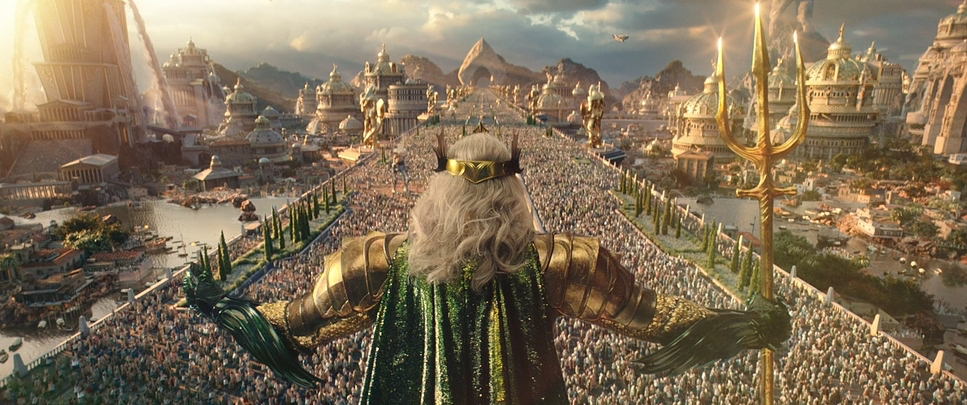
One of the defining features of Aquaman is its dynamic and fluid camera movements. To match the aquatic theme, Burgess employed long, sweeping takes and fluid transitions, making the viewer feel as though they were floating through the underwater world. These movements are especially evident in the battle sequences, where the camera pivots and glides around the action.
The Ring of Fire duel between Arthur and Orm is a perfect example of how camera movement enhances storytelling. The swooping and rotating shots mirror the intensity and chaos of the fight, immersing the audience in the action. This approach stands in contrast to the quick-cut editing style seen in many superhero films, opting instead for a more theatrical and immersive experience.
Underwater sequences posed unique challenges due to the physics of water. To simulate weightlessness, the team used rigs, wire work, and advanced CGI. The camera’s gentle drift mimics ocean currents, reinforcing the feeling of being submerged in an expansive, living underwater world.
Compositions in Aquaman
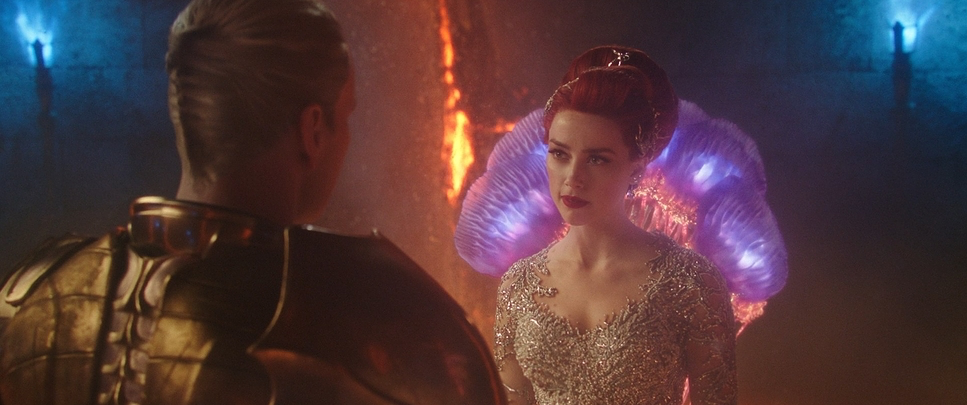
The compositions in Aquaman emphasize scale and grandeur, showcasing the vastness of Atlantis with wide-angle shots. The intricate architecture of Atlantis—towering spires, glowing cities, and bustling marine life—is meticulously framed, encouraging viewers to explore every corner of the screen.
Symmetry plays a crucial role in the visual language of Atlantis, with balanced compositions reflecting its regal and mythological essence. In contrast, surface-level scenes employ tighter, more grounded framing to emphasize the human aspects of Arthur’s journey. This juxtaposition highlights his duality, bridging the worlds of land and sea.
Close-ups of Jason Momoa’s Arthur Curry frequently frame him against ocean backdrops, symbolizing his deep connection to the sea. These compositions blend character and environment seamlessly, reinforcing the narrative’s themes of legacy and belonging.
Lighting Style of Aquaman
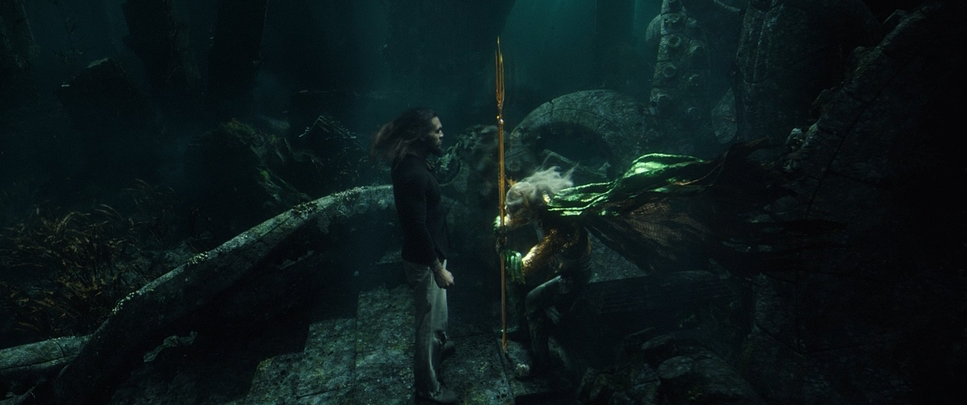
Lighting is one of the most striking aspects of Aquaman‘s cinematography. Burgess used a mix of practical effects and CGI to create an otherworldly underwater environment. The bioluminescent glow of marine life and coral reefs adds a magical quality to Atlantis, while diffused light mimics the way sunlight filters through water.
The surface scenes, in contrast, are lit with a more naturalistic style. Warm, golden hues dominate, providing a stark contrast to the cool, neon tones of the underwater world. This shift in lighting underscores Arthur’s internal conflict as he navigates the two worlds.
Lensing and Blocking in Aquaman
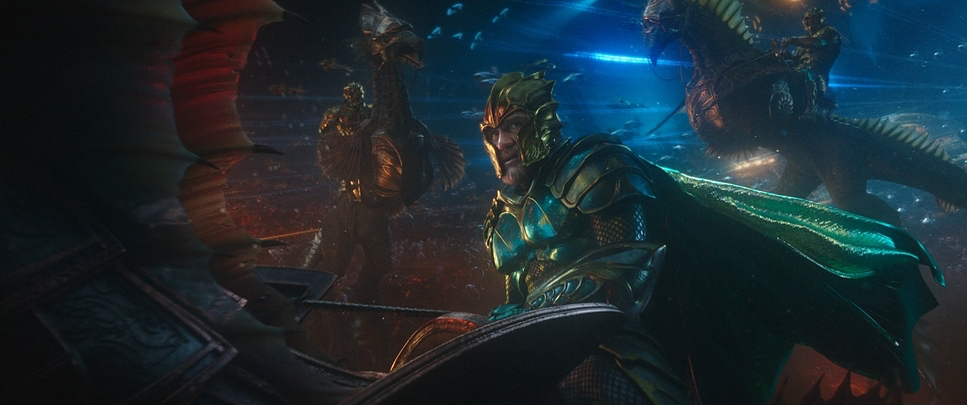
Wide-angle lenses dominate the underwater sequences, emphasizing the epic scope of the film. These lenses capture the vastness of Atlantis while maintaining clarity in the intricate details of its architecture and marine life. For intimate moments, tighter lenses draw focus to the characters’ emotions, creating a balance between spectacle and personal storytelling.
Blocking plays a vital role in the film’s action scenes, where characters are positioned to guide the viewer’s eye through the chaos. The three-dimensional movement in the underwater sequences adds complexity to the blocking, creating dynamic and layered visuals.
The use of long takes further enhances the film’s visual appeal. Sequences like the Sicily rooftop chase showcase precise coordination between actors, camera operators, and the VFX team, resulting in smooth, engaging action.
Color Grading of Aquaman
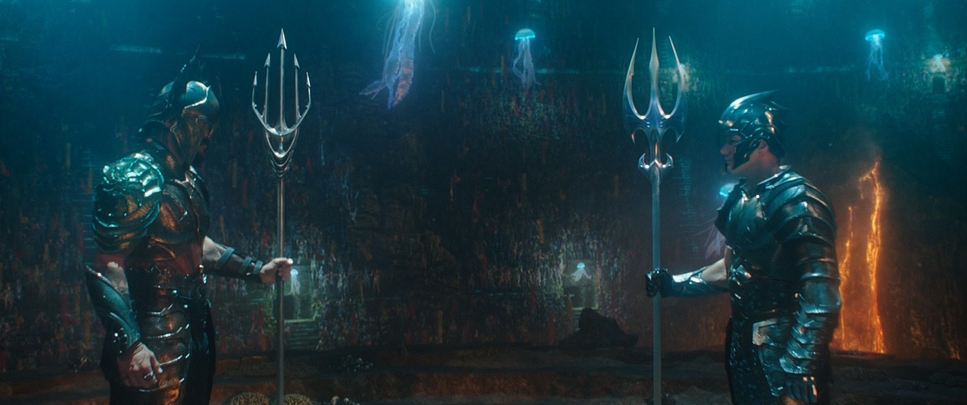
As a colorist, I find Aquaman‘s color grading particularly fascinating. The film embraces a bold, saturated palette, departing from the muted tones of earlier DCEU entries. Vibrant blues, greens, and purples dominate the underwater sequences, reflecting the comic book origins of the story. These colors are balanced with bursts of neon to add energy and excitement.
Above water, the palette shifts to warmer, earthier tones, reflecting the grounded reality of Arthur’s human life. This duality in color grading mirrors Arthur’s struggle to reconcile his two identities.
The grading process involved extensive collaboration between Burgess and the VFX team to ensure consistency across live-action and CGI elements. Tools like DaVinci Resolve allowed for precise adjustments, ensuring that the visuals remained cohesive and immersive.
Technical Aspects: Cameras, Lenses, and Tools Used
Aquaman was shot primarily on ARRI Alexa cameras paired with Panavision Primo lenses, delivering stunning image quality with a cinematic softness. The underwater sequences combined practical filming techniques with extensive CGI. Dry-for-wet techniques were frequently used, where actors performed against blue screens, with water effects added in post-production.
Specialized camera rigs and housings enabled filming in actual water for certain scenes. Motion capture technology and advanced pre-visualization tools were also employed to achieve seamless integration between live-action and digital elements.
Sound design played a crucial role in enhancing the underwater atmosphere. Subtle digital effects mimicked the acoustics of speaking underwater, while muted soundscapes added authenticity to the submerged sequences.